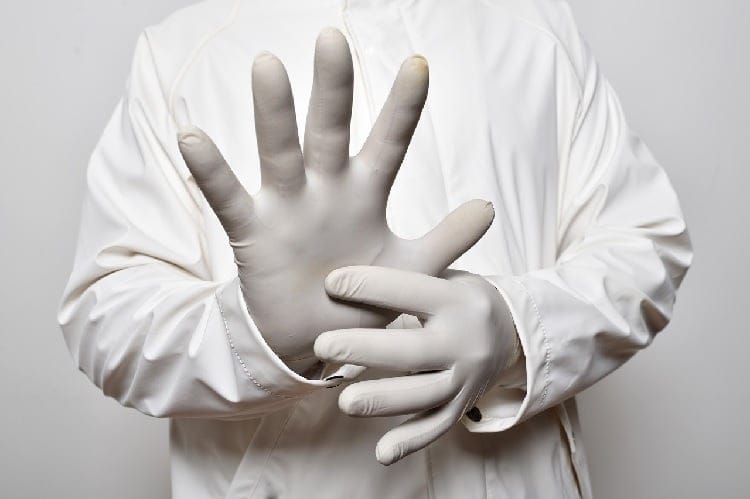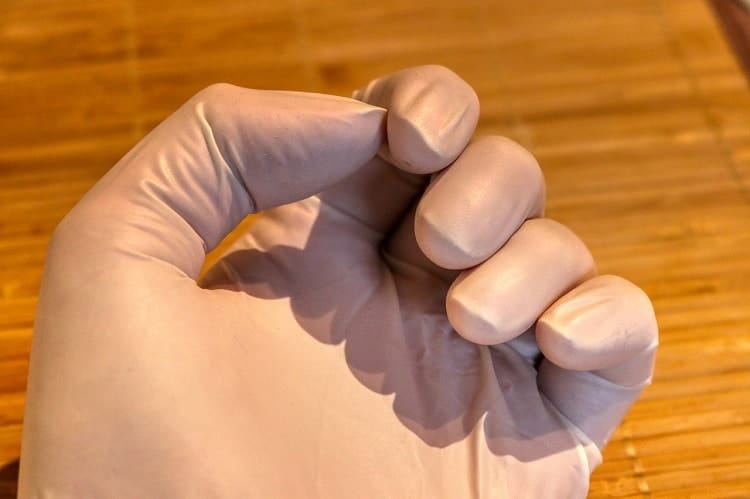Thanks to the COVID-19 pandemic, you’re now more likely to see people outside wearing not just face masks but also a pair of disposable gloves. This isn’t all that surprising at all. On the surface, disposable gloves seem to be an obvious solution to protect oneself from diseases that can get transmitted through contact with contaminated objects and surfaces. After all, doctors, nurses, and EMTs wear them all the time.
However, if you dig deeper, you’ll find that there are many problems with relying on disposable gloves as an everyday personal barrier against microbes. Here are some of the reasons why you should leave single-use gloves to professionals and rely on using reusable gloves instead of disposable ones.

1. Most Disposable Gloves Do Not Actively Destroy Microbes
Most single-use gloves are inert and they are not designed to kill microbes, including coronaviruses much like the type that causes COVID-19. This means that even when worn as directed, the outside surface of disposable gloves can be teeming with bacteria and viruses, even days after they’re used. This means that you have to be exceedingly careful to not let the outside surface come into contact with anything you don’t want to be contaminated.
In contrast, there are commercially available hand protectors that have been treated with antimicrobial treatments that actively destroy most microbes they come in contact with. Treatments, like those based on silver nanoparticles and vesicle technology, can kill pathogenic organisms upon contact. This means there is much less of a risk of cross-contamination.
2. Disposable Gloves Need to Be Used with Care
Medical professionals are trained in the use of disposable gloves and understand their limitations. Most of us regular folks? Maybe not so much.
Disposable gloves have to be used in a very specific way to prevent cross-contamination of surfaces. Even if you have gloves on, you still have to be aware of everything you touch. If you so much as touch a contaminated doorknob with a disposable glove then touch your phone, for example, you may risk transferring microbes from the contaminated doorknob to your face when you make a call hours later.
It’s also important to understand that most disposable gloves are designed for one use only. If the gloves are improperly reused, as many people are doing, they will fail to provide the necessary microbial barrier and may even become a fomite for all kinds of diseases. This is why an arm sleeve or an antimicrobial hand protector is a simpler, more sustainable solution.

3. Disposable Gloves May Be Porous
While disposable gloves do provide an effective barrier against most larger microbes such as bacteria and fungal spores, it is still not known for certain if they are impermeable to viruses.
As it happens, our bare skin is sufficient to prevent the entry of most bacteria and viruses into our bodies—including known coronaviruses. It may even surprise you to know that even when the relationship between microbes and illness became known and widely accepted in the late 19th century, doctors did not universally use disposable gloves until the 1970s.
The problem is that bacteria and viruses can get into your body through cuts or through the mucous membranes in your eyes, nose, and mouth. This is the reason why you should avoid touching your face if you are in a place that is likely to have a high concentration of dangerous microbes, such as in hospitals or public transport.
This is also part of the reason why most experts now recommend wearing face masks as they prevent you from touching your face. The danger of transmission from touching your face with contaminated hands exists whether or not you are wearing disposable gloves.
4. They Are Only Effective as a Temporary Barrier
Even gloves that are impermeable to some viruses during testing will break down and become porous to small microbes the longer you wear them. The main benefit is that they prevent serious contact with bodily fluids, as happens during medical procedures. Disposable gloves by themselves are not enough protection, and medical professionals will only wear them after proper handwashing or disinfection.
5. They Can Be Uncomfortable — and Unsanitary
It’s best to get single-use gloves in your size to ensure that they aren’t too tight or baggy. However, given the shortages in single-use gloves, you’re hardly guaranteed to be able to get ones in your exact size. Even if you get ones in the right size, you might find that your hands will get sweaty and uncomfortable over time. Combined with the warmth of your hands, this can provide bacteria with the ideal environment to thrive. Ironically, if you wear the same gloves too long, the inside is liable to get more contaminated than the outside.
On the other hand, textile-based antimicrobial hand protectors and arm sleeves are very comfortable to use, and they will fit any sized hand. Because the concept around such products is to actively kill microbes rather than just block them, they’re quite breathable and can be used comfortably for long periods.
Generally speaking, single-use gloves should only be used by trained professionals who understand the limitations and context of their use. While they offer valuable protection for doctors, EMTs, and nurses, they have more drawbacks than benefits for regular people doing everyday tasks. For the rest of us, hand protectors or arm sleeves are the better option for daily use given their simplicity, comfort, discreet look, sustainability, and antimicrobial properties.

